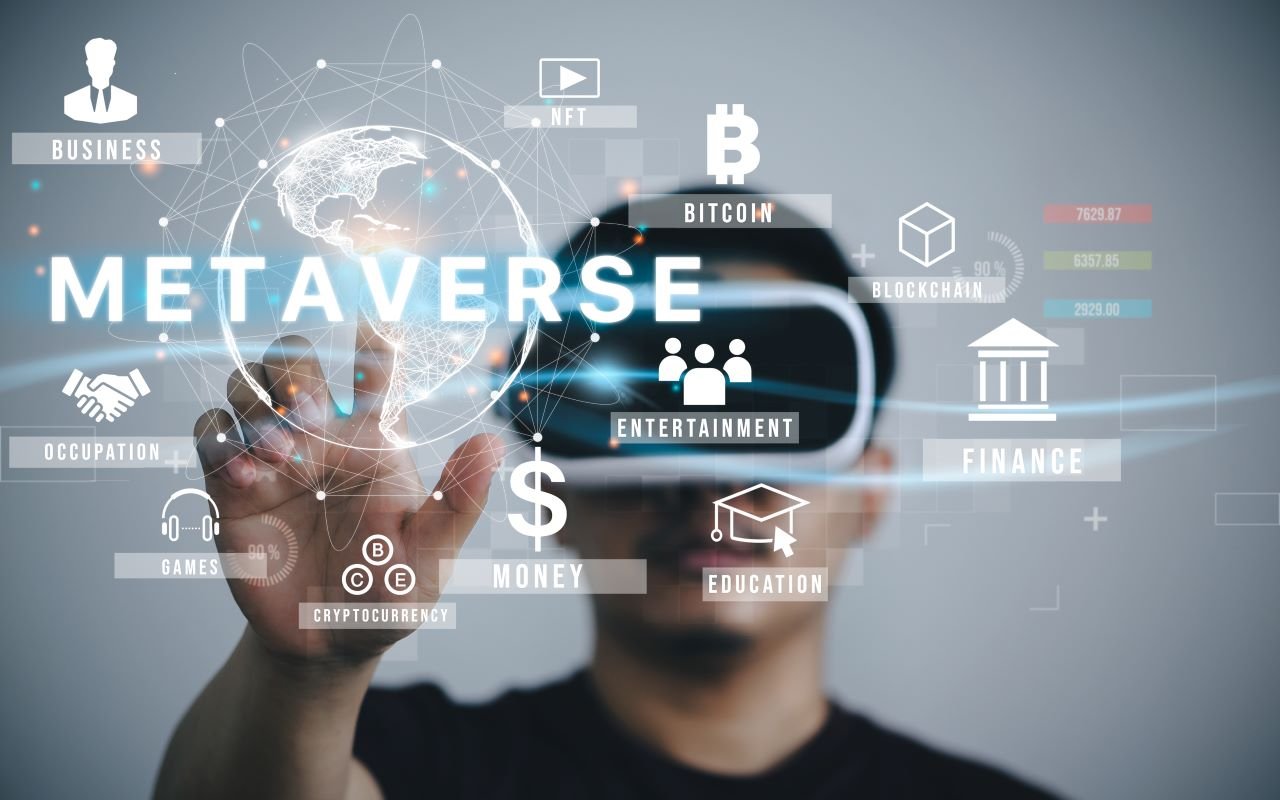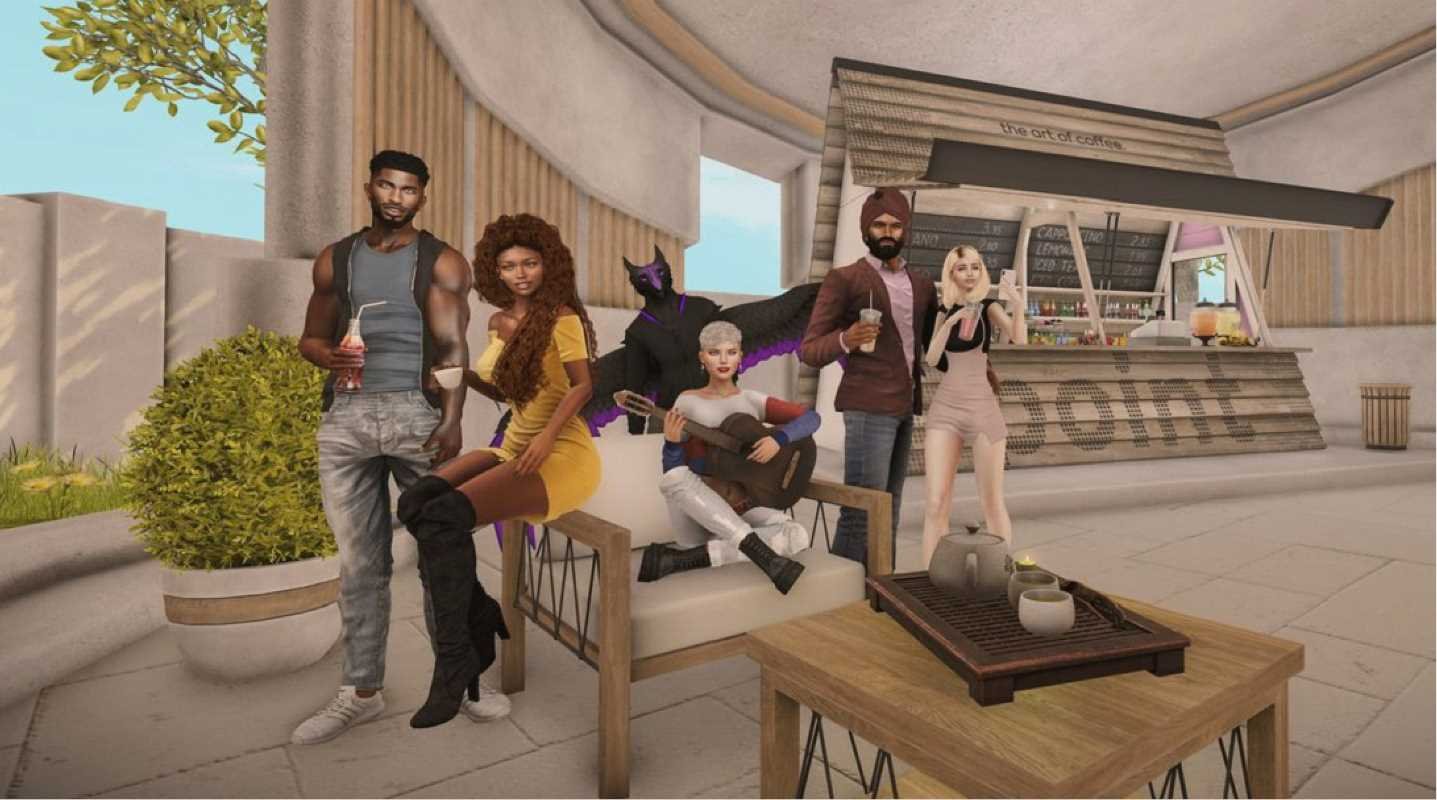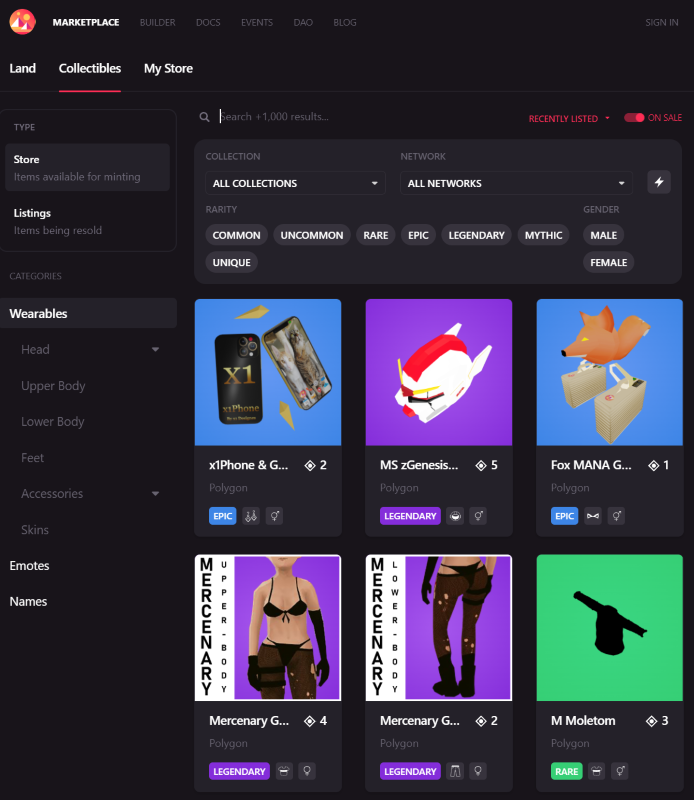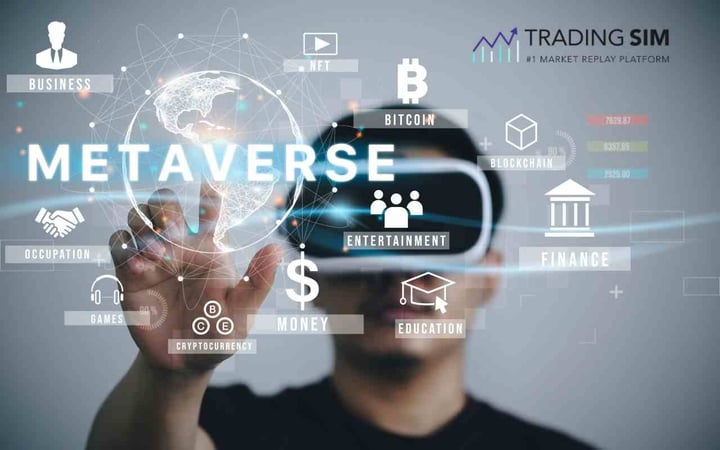How many times have you heard about the "metaverse" but haven't really taken the time to understand what it is? Maybe you think it has something to do with Dr. Strange and the Multiverse? Well, you might not be all wrong. Admittedly, it can be a confusing concept to think about, with layers of reality and virtual reality stacked on top of each other.
In this blog post, we will break down the metaverse easily enough for dummies and explain how it works. Don't worry, there won't be any complex terms or concepts. We'll keep everything as simple as possible. So if you're curious about metaverse, read on!

What does metaverse mean?
Metaverse is a term that is used to describe the virtual world that exists online. It is made up of all the different websites, social media platforms, and games that people use. In other words, it is pretty much synonymous with "cyberspace". But it is also much more than what most of us know as cyberspace.
The term was first coined by Neal Stephenson in his novel Snow Crash. In the book, the Metaverse is described as a three-dimensional virtual world where people can interact with each other and with computer-generated characters. Metaverse has become increasingly popular in recent years, as more and more people spend time online.
Some people believe that the Metaverse will eventually replace the physical world, as it offers a far more immersive and interactive experience. However, others believe that it will simply supplement our reality, providing us with an alternate way to engage with the world.
Either way, the Metaverse is sure to have a major impact on our lives in the years to come. While the concept is still in its early stages of development, it has the potential to revolutionize the way we interact with each other and with digital content.

Does the metaverse already exist?
Yes, definitely. The metaverse is all around us. Well, while we're online, anyway. Major tech industries are moving in this direction in order to create a parallel world.
In prior years, we have seen a lot of developing technologies trying to attract people to the digital world -- the goal being to force more people to live and interact online. But, due to the unreadiness of the technology to support such a thing, the complete rollout has been delayed.
Now, thanks to VR and AR and more powerful devices, people should be able to live and frequent the metaverse more easily. Whether or not the metaverse exists is not up for debate anymore.
Some say that we are already living in the metaverse thanks to digital technologies and the internet. Others believe that it will be considered a completely alternative universe when humanity will be moved to the virtual world where people can live and interact entirely online.
No matter what side of the debate you’re on, it’s fascinating to think about how our lives might change in the future.
How does metaverse work?
The metaverse is a computer-generated universe. That means it's a virtual world (a simulated environment) that you can explore and interact with. The metaverse also has its own rules, its own physics, and even its own currency called bits, coin, or token.
At its center, the metaverse provides a simulated world consisting of 3D video graphics, environments, and characters. Your metaverse experience is a virtual world that’s populated by other players like you. It's here that you can enjoy gaming by yourself or with others in an environment that's unlike anything else on Earth. But it isn't limited to gaming.
In this virtual world, there are many things to do:
- explore breathtaking vistas
- talk to new people
- play games with friends
- build homes and workspaces for others to visit (known as "cities")
- create objects using 3D models
- give gifts and receive gifts from other players
- drive cars or bikes around town
- collaborate with remote colleagues
- attend concerts and other shows
- invest in digital artwork
- get a job in the metaverse
In other words, just about anything your imagination desires. Many believe it will replace typical day-to-day activities like applying for a license or other "physical" world activities.
Metaverse Avatars and Holograms
People interact in this virtual space via avatar. You're probably familiar with the term “avatar,” but what is it?
An avatar is a representation of yourself within the metaverse. Your avatar can be customized to look like you or any other character you choose to represent yourself.
Users control their avatars using devices such as game controllers and motion sensors, which allow them to move around in the virtual space without having to physically travel there. Most platforms also offer voice chat that allows people to speak with their avatars.

Metaverse VR Headsets
To get started in your new life as a traveler through this new world, all you need is an HMD (head-mounted display) like Google Glass or Oculus Rift, which will allow you to see everything around you in 3D while still being able to interact with your environment using hand gestures or voice commands via Bluetooth headset.
Some of the most successful companies in this space have been experimenting with real-world locations as entry points into virtual spaces. That's because, unlike many other types of VR experiences that are largely solitary, virtual worlds are often shared experiences.
In Second Life, for example, users can meet up at clubs or bars that have been modeled after their favorite local venues. And AltspaceVR allows you to visit your favorite places on earth (like Times Square) while meeting new people in a virtual world.

The metaverse is still very much a work in progress. It’s still in its infancy, and there are many issues that need to be addressed before it can be considered a mature technology. So, you shouldn't expect it to work like the real world right now, but it's getting closer every day!
With all the uncertainties and doubts we might have today living in the real world, we (as humans) should be able to find a threshold that is clearly opposite from the real world to the virtual one.
Every experience we've had in the real world, such as going to the theatre or cinema, feeling our chest-thumping from the speakers at a concert, and many other emotions, are planned to be transferred into a digital world.
In brief, the metaverse is the candidate to offer a parallel reality, where people can live, spend their time, entertain themselves, buy and sell goods and services and of course meet others.
Like all technologies, the drift towards misuse is always a possibility. Being able to live a healthy and fulfilling life, and balancing the two worlds will be one of the most difficult concepts to teach to the younger generations in the next decades as some opponents of the metaverse believe.
Can metaverse make you rich?
The potential does exist to make money in the metaverse. For example, there are virtual platforms such as Second Life or Habbo Hotel that allow you to interact in a virtual commerce environment. Whether or not you will become rich is debatable.
Over the past decade, there has been a growing trend of people buying and selling land in digital worlds, also known as the metaverse. While the most well-known example is probably Second Life, there are many other popular metaverses, such as Entropia Universe and Blue Mars.
For some people, buying and selling land in the metaverse is simply a fun way to make money. However, there are also those who see it as an investment opportunity. After all, as more and more people spend time in digital worlds, the demand for virtual land is likely to increase.
As a result, those who own land in the metaverse could see their investment grow significantly in value. Of course, there are also risks involved, such as the possibility that a particular metaverse could one day disappear. Nevertheless, for those who are willing to take the risk, buying and selling land in the metaverse can be a lucrative business.
Making money in the metaverse
Making money in the metaverse can be as simple as setting up a shop and selling goods or services. However, there are a few things to keep in mind in order to be successful.
1. Choose a location that is central and easy to find.
2. Offer goods or services that are in demand.
3. Price items competitively.
By following these tips, it is possible to generate income by selling goods or services in the metaverse. Even if at the moment these are all good ideas, it might take a while to see things really take off and have real people interacting with you in a metaverse shop.

How to enter the metaverse?
The metaverse is a virtual reality platform that allows users to interact with each other in a 3D environment. There are many ways to enter the metaverse, but the most popular method is through the use of a headset.
Head-mounted displays, or HMDs, provide users with an immersive experience by displaying computer-generated images directly in front of their eyes. Typically, HMDs also include headphones and hand controllers, which allow users to interact with the virtual world around them.
While HMDs are the most common way to enter the metaverse, there are also other methods, such as through the use of augmented reality glasses or by using a special room that uses projector-based technology.
In addition to the headset, you'll need to be part of a platform that offers a metaverse, for obvious reasons. So having a good computer and graphics processor will do you good. No matter how you choose to enter the metaverse, you're sure to have an unforgettable experience.
Which metaverse is best?
There are many different types of metaverses, each with its own advantages and disadvantages.
Decentraland
Decentraland is a good choice for those who value decentralization and privacy, as it offers a fully decentralized platform where users can create and own their own content. However, it can be difficult to find people to interact with inside Decentraland, as the population is relatively small.
SandBox
Sandbox is a good option for those who want to experiment with building and creating things, as it offers a wide variety of tools and resources for users to play around with. However, Sandbox can be confusing and difficult to navigate for newcomers.
Stageverse
Stageverse is a good choice for those who want to perform or watch live shows, as it offers a variety of stages and performance spaces for users to choose from. However, Stageverse can be expensive, as users have to pay for tickets to enter shows.
Ultimately, the best metaverse depends on the individual's needs and preferences.
Who owns the metaverse?
This question can be tricky. It's a lot like asking, “Who owns the world?”. There are no entities who own the world, per se, unless you believe in conspiracy theories and the illuminati. Rather, as we know, it is led by the countries with major influence, by certain leaders, and in certain cases by organizations. Of course, individuals in free states own their own pieces of land.
We know that “metaverse” is a term used to describe the virtual world, especially in reference to cyberspace or virtual reality. A virtual reality that someone created and offered to the world. Being the metaverse is the sum total of all online communities, chatrooms, and websites. This might lead you to think that random people own the metaverse.
But in reality, the owner of each metaverse is the owner of the project behind it.
That being said, there is no single owner of the metaverse, particularly if it is decentralized. Instead, it is composed of many different elements created and maintained by a variety of individuals and organizations. You might call these stakeholders.
Some of the most popular areas of the metaverse include social networking sites, virtual worlds such as Second Life, and online gaming communities. While there is no one person or entity who can claim ownership over the metaverse, it is safer to say that it belongs to all of us who use and contribute to it.
However, it is worth noting that this is a bit of a "gray area" in the metaverse industry. As such, you should always take caution when investing anything on a metaverse platform. Do your due diligence on the stability and ownership of the platform. We'll discuss how blockchain helps with this issue in a moment.
How to buy land in the metaverse?
The metaverse is a hot commodity these days. With the popularity of virtual reality and augmented reality on the rise, more and more people are looking for ways to get involved in this new realm. One way to do this is to buy land in the metaverse. But how exactly do you go about doing that?

There are a few different ways to buy land in the metaverse. The first is to buy it through a company that specializes in selling virtual real estate. These companies typically have their own platforms or websites where you can browse and purchase land. The second way to buy land in the metaverse is to buy it through an online marketplace such as eBay or Craigslist. You may be able to find someone selling land on one of these platforms, or you may have to put in a bid for a piece of land that you're interested in.
Finally, you can also buy land in the metaverse by participating in an auction. Auctions are becoming increasingly popular to purchase virtual real estate, and they allow you to get your hands on some rare and valuable pieces of property. If you're interested in buying land in the metaverse, keep an eye out for auctions that are taking place on platforms.
What is metaverse crypto?
Now that we've covered the Metaverse as an online environment where people interact and communicate with one another over computer networks, we should try to understand how many kinds of metaverses are out there and how their economy works. As part of that, crypto is at the heart of metaverse economies.
Yes, they have an internal economy!
Decentraland Crypto MANA
Decentraland is a virtual world that runs on the Ethereum blockchain. It's one of the first metaverse crypto companies to build a 3D virtual world where users can explore, build, and share experiences.
Decentraland's model allows users to purchase land through their Ethereum wallet using MANA tokens (the currency used in Decentraland). Once you've bought some land, you can build structures with it—like an apartment complex or an office building—or create applications that run on your land.
SAND Tokens
The Sandbox is another virtual world where players can explore, build and trade. The Sandbox is built on the Ethereum blockchain, which means that all transactions are recorded in a decentralized ledger that cannot be altered or changed.
In addition to being able to buy and sell items in-game using SAND tokens, users can also transfer them between other users through smart contracts. This allows for more flexibility than if you had to go through an intermediary such as PayPal or eBay when making trades in real life.
Cryptovoxels
Cryptovoxels is a virtual reality game that allows you to create and share virtual worlds. You can build your own world, and invite friends to visit it. You can also buy and sell virtual real estate. You can also visit other people's worlds.
Somnium Space
Somnium Space is a virtual reality platform that allows users to create their own virtual worlds. Users can buy land, sell it to other users, and even create their own avatars. You can also buy and sell in-game items and games on the platform. It's very versatile because you can create your own social networks within the world of Somnium Space.
Blockchain Cuties
Blockchain Cuties Universe is a new blockchain-based game that allows you to collect and breed cute digital pets. It's a game that allows you to collect and breed cute digital pets.
Are metaverse coins a good investment?
Crypto MANA, SAND, and ENJIN are all digital assets that can be used to purchase goods and services or traded on exchanges. Each asset has its own unique properties, but all three share some common features: they are used in metaverses.
As you may know, cryptocurrencies are digital or virtual tokens that use cryptography to secure their transactions and control the creation of new units. Cryptocurrencies are decentralized, meaning they are not subject to government or financial institution control. This doesn't mean that they are always stable, however.
Crypto MANA
Decentraland is a virtual reality platform (read metaverse) powered by the Ethereum blockchain. Users can create, experience, and monetize content and applications. The Decentraland community uses the MANA token to purchase land and goods and services in the Decentraland economy.
Because the Decentraland platform is built on top of the Ethereum blockchain, it is possible to track ownership of virtual land parcels securely and permanently. To that end the ERC-20 MANA token is used to purchase land in Decentraland. Landowners can develop their parcels as they see fit and are able to monetize them by selling or leasing their land, or by developing applications on top of them.
The advantage of using blockchain technology is that it allows for a secure and permanent record of ownership. Does this make metaverse coins a good investments? That's debatable. It does, however, make it easier to buy and sell and generally exchange commerce in the metaverse. For that reason, if you're planning to interact in these worlds, you'll probably want to invest in some of these coins.
SAND Token
The SAND token is used to purchase virtual in-game land, which can be thought of as virtual plots of land inside the Sandbox metaverse.
Virtual land is an essential part of a Sandbox metaverse. It will enable players to create buildings and other structures on their own or with friends, and it will serve as a base for all kinds of interactions within a community. The Sandbox metaverse will have multiple types of land available:
⦁ Public Land - This type of land is free for anyone to use, but anyone can also access it at any time. Public lands are mostly used for open areas where you can build whatever you want without needing permission from another player or owner first!
⦁ Private Land - This type of land has been purchased by someone else in order to prevent others from accessing it without permission from its owner(s). A private property owner may choose who they allow entry into their area based on whether or not they like them personally (or maybe even whether or not they've ever met before), but most people won't bother buying more than one private piece because there aren't many benefits compared with public spaces.'
Enjin Crypto
Platforms powered by the Enjin (ENJ) ecosystem allow people to trade their digital game items in a decentralized fashion, allowing gamers to buy or sell their digital items for ENJ or other cryptocurrencies, or transfer them between supported games.
Enjin is a gaming cryptocurrency. It is used to power the Enjin ecosystem. The Enjin ecosytem allows people to trade their digital game items in a decentralized fashion, allowing gamers to buy or sell their digital items for ENJ or other cryptocurrencies, or transfer them between supported games.
Is the metaverse bad?
The metaverse can be a great place to meet new people and have fun, but there are also some risks associated with it. For example, virtual gangs have been known to target members of rival gangs in the metaverse.
In addition, there have been cases of cyberbullying and harassment in the metaverse. However, with incoming aggressors, there’s a strengthening of the “police,” representing ways to stay safe in the metaverse.
For instance, many platforms allow users to report abuse and block other users who are causing problems. In addition, there are often community moderators who can help to keep the metaverse a safe and enjoyable place for everyone.
What is the future of the metaverse?
The future of the metaverse is impossible to predict with any certainty. However, there are a number of factors that suggest that it will become an increasingly important part of our lives in the years to come.
First, the technological infrastructure needed to support the metaverse is rapidly improving. bandwidth speeds are increasing, and new VR and AR devices are becoming more affordable and capable.
Second, there is a growing demand for immersive, user-friendly experiences. As we become more accustomed to living in a digital world, we will increasingly seek out ways to interact with others in virtual spaces.
Finally, the metaverse provides a unique opportunity to create entirely new worlds. As we expand our understanding of how to design and build digital environments, we will be able to create ever-more realistic and compelling virtual worlds.
Taken together, these trends suggest that the metaverse is poised to play a significant role in our lives in the years to come.















 Crypto
Crypto 
